Disclosure: This article contains affiliate links. We may earn a commission from purchases at no extra cost to you, which helps our travel content.
The morning sun cast long shadows across Timbuktu's sand-colored buildings as I adjusted my drone's settings for the perfect aerial shot. The ancient city stretched before me like pages from a history book come to life. Standing there, with my backpack containing little more than essentials and my trusty camera gear, I couldn't help but feel the weight of the journey ahead – 3,000+ miles across the African continent to Dar es Salaam on Tanzania's coast. This wasn't my typical wilderness trek in the Appalachians or Pacific Northwest. This was Africa in winter – raw, challenging, and utterly magnificent. And I was about to traverse it on a shoestring budget that would make even the most frugal college student proud. Buckle up, adventure seekers – this month-long cross-continental journey taught me more about resilience, cultural connection, and budget travel hacks than any coaching clinic ever could.
Preparing for a Trans-African Adventure
When my former college track star Ayana invited me to join her research trip across Africa, I initially balked at the budget – $1,500 for an entire month crossing multiple countries? Challenge accepted.
The key to this journey was ruthless packing minimalism. I ditched my usual gear setup for a lightweight travel backpack that could handle both urban markets and rural villages. Inside went just three quick-dry outfits, a convertible hiking pant/short combo, and my wilderness essentials.
Vaccinations were non-negotiable – Yellow Fever, Typhoid, and Hepatitis A/B topped the list, along with antimalarials appropriate for the regions we'd cross. I spent weeks researching visa requirements, eventually opting for a combination of advance visas and borders where visas-on-arrival were reliable and budget-friendly.
The most valuable preparation? Learning basic phrases in French, Arabic, Swahili, and a handful of regional languages. I recorded native speakers on my phone and practiced during my morning runs. Those simple greetings opened more doors than any amount of money could have bought.
My wilderness training came in handy when plotting our route. Instead of expensive tours, we mapped a combination of public transportation, shared taxis, and occasional hitchhiking (only in safe areas with local recommendation). The money saved on transportation meant occasional splurges on unique accommodations – like the family-run guesthouse in Mali where I learned to ferment millet into a delicious beverage that reminded me of my experiments with kombucha back home.
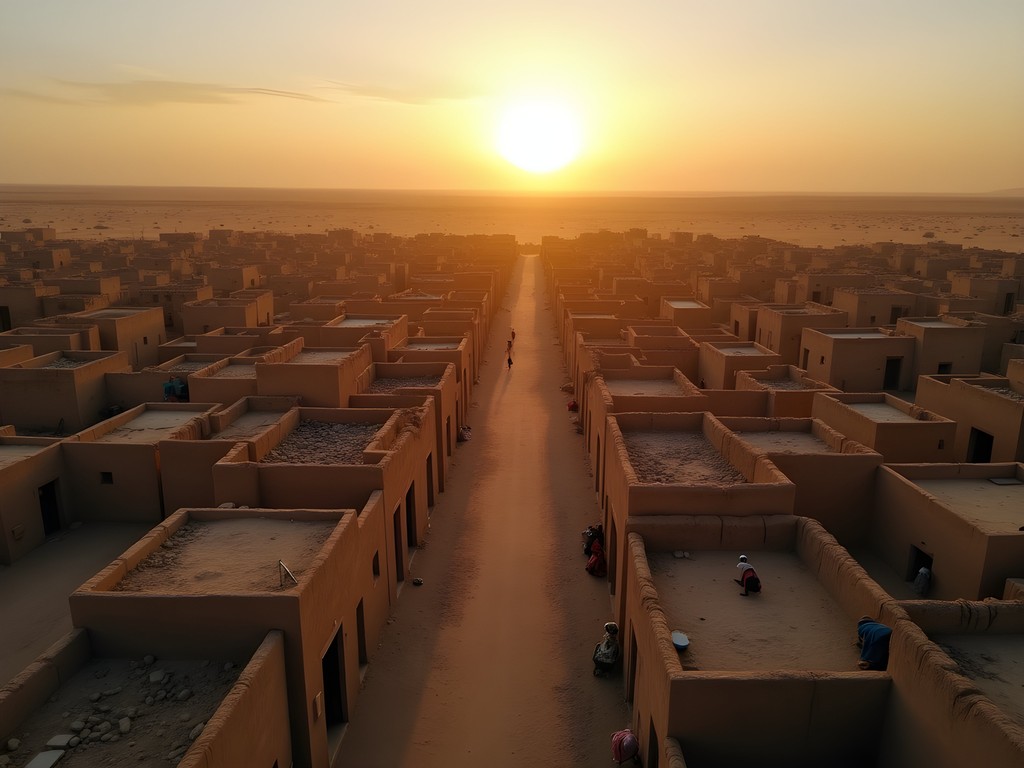
💡 Pro Tips
- Start visa applications at least 3 months before departure
- Learn to count to ten and say thank you in each regional language
- Pack a comprehensive first aid kit with antibiotics prescribed by a travel doctor
Crossing the Sahel: Mali to Niger
The journey from Timbuktu through eastern Mali into Niger tested every wilderness skill in my arsenal. This wasn't the familiar terrain of New Zealand backcountry or Norwegian fjords – this was the Sahel, where the Sahara gradually gives way to savanna, and climate change has pushed traditional communities to adapt or migrate.
We traveled primarily by sept-place – literally 'seven-place' shared taxis that somehow managed to fit nine people plus chickens. These vintage Peugeot station wagons with roof racks piled high with goods offered front-row views into local life. My water purification system proved invaluable as we crossed regions where clean water was scarce.
In Gao, we connected with a women's cooperative making traditional indigo textiles. I spent an afternoon learning their dyeing techniques, which reminded me of the fermentation workshops I'd run back in Baltimore, just with completely different inputs and cultural significance. The women laughed at my blue-stained hands but praised my willingness to get messy.
The border crossing into Niger required patience and small 'gifts' of tea and sugar rather than bribes. Once across, we joined a group of students heading to Niamey, Niger's capital. They were studying environmental science and shared fascinating insights about desertification and community adaptation projects.
Nights were spent in simple guesthouses or with families who offered rooms to travelers. One memorable evening, we slept on mats under the stars while our host, a former nomadic herder, explained how to read the night sky for navigation – knowledge that paralleled but differed from what I teach in my wilderness orientation courses.
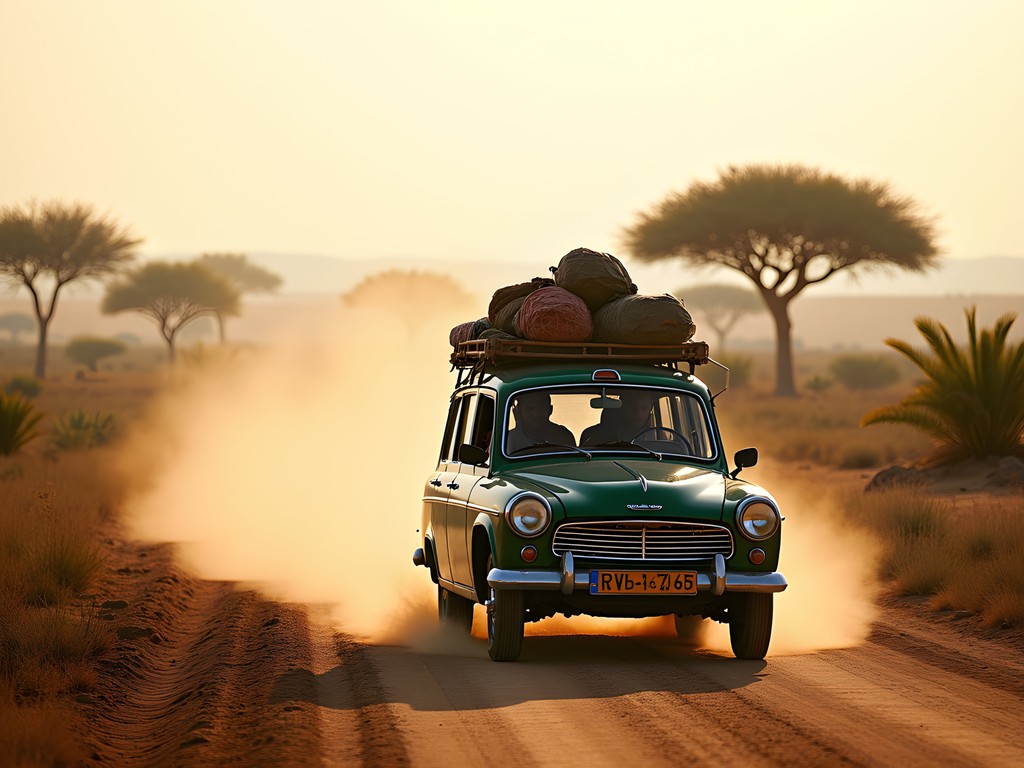
💡 Pro Tips
- Always negotiate transport prices before getting in any vehicle
- Carry small denominations of local currency plus some emergency euros
- Travel with a local whenever possible in border regions
Lake Chad Basin: Navigating Challenges
The Lake Chad Basin presented the most logistically challenging segment of our journey. Once Africa's largest lake, it's now a fraction of its former size, creating environmental and political complications that impact travel. This region required careful navigation – both geographically and culturally.
We connected with a student environmental monitoring group that was documenting the lake's changing shoreline. They allowed us to join their research camp for three days, where I put my drone photography skills to work capturing comparative aerial footage of current shorelines against historical markers. The footage was sobering – visible evidence of climate change that reminded me why environmental stewardship drives so much of my travel philosophy.
Food in the region was simple but flavorful. I carried my compact spice kit everywhere, which earned curious looks until I shared my spice blends with our hosts. Those small culinary exchanges created instant connections that transcended language barriers.
Security concerns meant adjusting our route several times. We relied on local university students and teachers for guidance about which areas to avoid. When transportation options dwindled, we joined a convoy of supply trucks heading east – spending two memorable nights sleeping in hammocks strung inside an empty cargo area while the drivers took turns at the wheel.
The long hours of transit gave me time to document our journey in my weatherproof journal. My coaching habit of performance tracking translated well to travel – noting distances covered, money spent, and lessons learned. This region taught me that flexibility isn't just helpful in adventure travel – it's essential. When our planned route through northern Cameroon closed due to local unrest, we pivoted south through N'Djamena and into the Central African Republic, adding days but revealing unexpected treasures.

💡 Pro Tips
- Research current security situations daily using local news sources
- Connect with university environmental groups for both safety and meaningful exchanges
- Always have multiple route options mapped out
East African Highlands: Budget-Friendly Wilderness
After weeks traversing the Sahel and Central Africa, the East African highlands felt like entering a different continent. The temperature dropped, vegetation exploded into lush greens, and my wilderness skills found familiar territory. This region offered the perfect balance of adventure and budget-friendly options for students and backpackers.
In Uganda, we discovered that national parks often have budget accommodations just outside their boundaries. While safari vehicles filled with tourists paid premium prices, we hiked boundary trails with local guides for a fraction of the cost. My compact binoculars became the most-borrowed item among our growing group of fellow travelers.
The highlight was Rwanda's breathtaking landscapes. We splurged on a one-night stay at a community-run ecolodge perched on a ridgeline overlooking Nyungwe Forest. The lodge employed former poachers as guides, creating sustainable livelihoods while protecting the forest. Their knowledge of plant medicine reminded me of the Appalachian Trail herbalists I'd met during my viral B&B adventure years ago.
Food costs plummeted as we entered regions with abundant agriculture. Local markets overflowed with fresh produce, and my fermentation expertise found new applications as I traded techniques with women making traditional fermented porridges and beverages. These exchanges usually ended with shared meals and invitations to family compounds.
We crossed into Tanzania at a remote border post where few tourists ventured. The immigration officer was so surprised to see us that he invited us to lunch with his family before stamping our passports. His wife taught me to make ugali (cornmeal porridge) the proper way – a skill I've since incorporated into my wilderness cooking workshops back home.
Throughout the highlands, we stayed primarily in small guesthouses and homestays, averaging $5-10 per night. The real value came from the connections – like the family in western Tanzania who taught us to identify medicinal plants during an impromptu forest hike, or the university students in Mwanza who showed us how to navigate Lake Victoria's ferry system like locals instead of paying tourist prices.

💡 Pro Tips
- Use iOverlander app to find budget accommodations near national parks
- Always ask for student discounts even at small guesthouses
- Learn to cook one local dish in each country you visit
Final Stretch: Tanzania's Interior to Dar es Salaam
The journey's final leg took us through Tanzania's interior toward the Indian Ocean. After weeks inland, the pull of the coast energized our tired bodies. We traveled by a combination of rural buses, motorcycle taxis, and the occasional pickup truck bed – each offering its own adventure and window into local life.
Dodoma, Tanzania's capital, provided a mid-range hostel where we splurged on private rooms ($15!) to reorganize our gear and prepare for the final push. The city's central market became our resupply station, where I replaced my worn sandals with locally-made leather ones that have outlasted any hiking sandals I've owned.
As we moved eastward, the landscape transformed from highland plateaus to rolling hills and eventually coastal plains. Villages grew more frequent, and with them, transportation options multiplied. We joined a group of university students returning to Dar es Salaam after holiday, sharing transportation costs and gaining invaluable local knowledge about navigating the city.
One of my favorite memories came from an unplanned stop in Morogoro, where engine trouble stranded our bus for eight hours. Rather than complain, I pulled out my portable hammock and strung it between mango trees near the repair shop. Soon, local children gathered to watch this strange spectacle. The afternoon evolved into an impromptu cultural exchange – they taught me traditional games while I showed them how to set up the hammock properly.
The approach to Dar es Salaam brought increasing humidity and the unmistakable scent of ocean. After weeks inland, that first glimpse of the Indian Ocean from the hills above the city felt like a victory summit on a challenging trail. We'd traversed a continent on a budget that most travel websites would deem impossible.
Our final night's accommodation – a modest guesthouse in the Msasani neighborhood – felt luxurious compared to some of our earlier stays. From its rooftop, I launched my drone one last time, capturing the meeting of urban sprawl and ocean blue. The footage showed a city of contrasts – colonial architecture alongside modern skyscrapers, fishing dhows beside container ships – a fitting final chapter to our cross-continental journey.

💡 Pro Tips
- Budget extra time for coastal bus journeys - breakdowns are common
- Download offline maps of Dar es Salaam before arriving - it's a sprawling city
- Consider booking your first night in Dar in advance - it's the one city where showing up without a plan can be overwhelming
Final Thoughts
As my flight lifted off from Dar es Salaam, I scrolled through a month's worth of images – ancient Timbuktu, the shrinking shores of Lake Chad, misty Rwandan forests, and countless faces of people who'd shared their lives and lands with us. This trans-African journey wasn't just about covering distance on a budget; it was about connecting with places in ways that packaged tours simply can't offer. For the students and budget travelers reading this – Africa isn't beyond your reach. With preparation, flexibility, and genuine curiosity, this continent offers adventures that will fundamentally change how you see the world. The $1,500 I spent crossing Africa provided richer experiences than any luxury safari could offer. So pack that backpack, do your research, and step into the journey. The ancient streets of Timbuktu are waiting for your footprints, and somewhere along the way, you'll discover that the true value of travel can't be measured in dollars spent.
✨ Key Takeaways
- Connecting with local students is the best way to find budget accommodation and transportation
- Learning basic phrases in regional languages opens doors that remain closed to typical tourists
- Wilderness skills translate across continents when you're willing to adapt them to new environments
- The most memorable experiences often come from unplanned detours and transportation breakdowns
- A drone can be worth its weight for unique perspectives, but always research local regulations
📋 Practical Information
Best Time to Visit
November-February (dry season across most regions)
Budget Estimate
$1,200-1,800 for one month all-inclusive
Recommended Duration
Minimum 3 weeks, ideally 4-6 weeks
Difficulty Level
Challenging


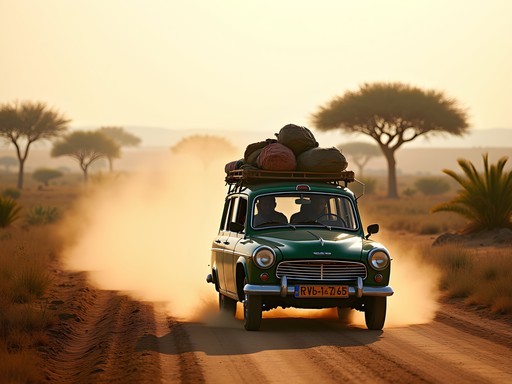
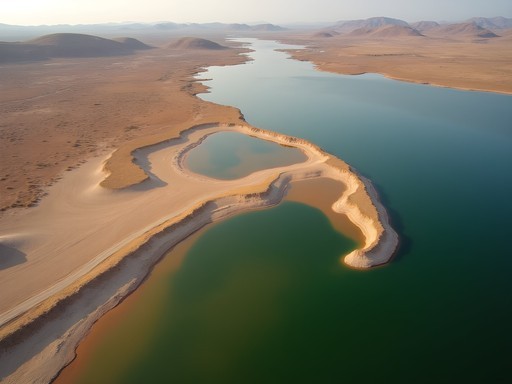
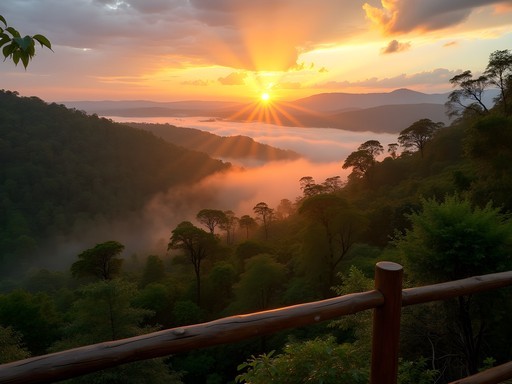



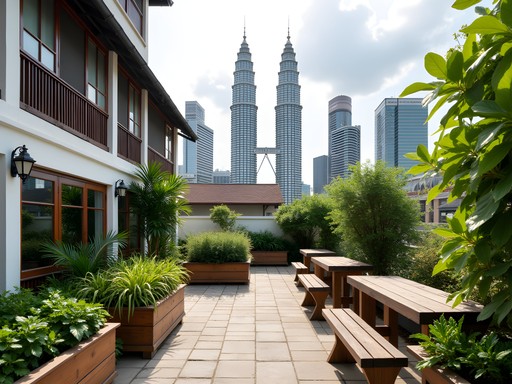

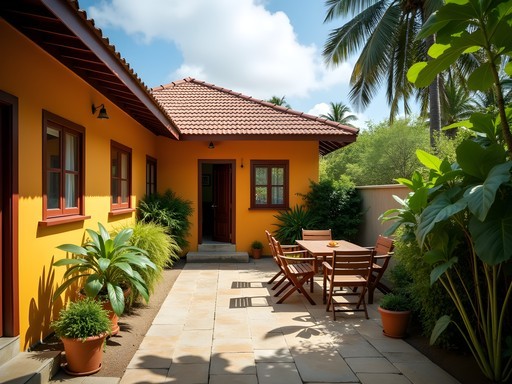


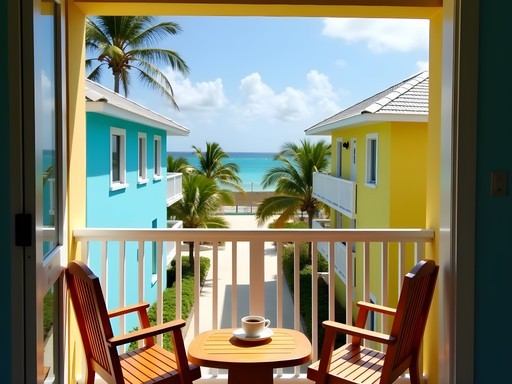


Comments
Douglas Bradley
Stella, this is a remarkable journey that few Western travelers attempt these days. Your budget breakdown is particularly helpful - I'm impressed you managed the entire route for under $2000! I crossed from Niger to Chad in 2024 and found the border procedures significantly more complicated than your experience suggests. Did you arrange any permits in advance? The section on public transportation options through East Africa is spot-on though - those converted Toyota minibuses are indeed the authentic way to travel. The cultural context you provided about the Lake Chad communities facing environmental changes adds important depth to what could otherwise be just another adventure post.
Stella White
Thanks Douglas! You're right about those border crossings - I should have mentioned I arranged my Chad permit through a fixer in N'Djamena before attempting the crossing. Definitely saved some headaches. The budget was tight but doable by staying in local guesthouses and eating street food!
bluelover
Those photos are incredible! Bucket list journey for sure.
escapeone
Wow Stella, this is seriously impressive! I did the Mali portion last year but chickened out on going further east. How did you handle the security situation around Lake Chad? I've heard mixed things about safety in that region. Your drone shots are absolutely stunning btw - what kind of drone are you using that survived all that sand and heat?
Stella White
Thanks @escapeone! Security around Lake Chad definitely required careful planning. I stuck with local guides who knew which areas to avoid and traveled with other tourists when possible. As for the drone, I used my compact drone - it's lightweight for travel and handled the conditions surprisingly well. Just had to clean it thoroughly every evening!
skypro
I was wondering about the drone too! Those aerial shots of Timbuktu are incredible. Did you have any issues with permissions to fly in these countries? I got stopped in Tanzania last year and had to pay a 'fee' to keep my drone...
Bryce Diaz
Stella, this brought back so many memories! I did a similar route in 2023 though I went west-to-east starting in Dakar. The East African Highlands section of your journey resonates deeply - those budget camps in Rwanda were such a find. I remember one night watching a storm roll across the valley from my tent, lightning illuminating the entire landscape. One tip for anyone following in these footsteps: the border crossing between Niger and Chad can be unpredictable with changing requirements. I carried my document organizer with extra passport photos and multiple copies of everything which saved me twice when officials wanted additional documentation. Did you have any issues with your drone permissions? That's something I struggled with, especially in Mali where the rules seemed to change depending on who you asked!
Stella White
Thanks for sharing, Bryce! The drone was definitely tricky - I had to get permits in advance for Mali and Tanzania, while Niger was a flat 'no.' In some remote areas, I just asked local village elders for permission rather than dealing with official channels. Those highland camps were magical, weren't they? Did you stay at the community-run one near Lake Kivu?
Bryce Diaz
Yes! The one with the little coffee plantation attached? Amazing place. The family taught me their traditional roasting technique. Still making coffee that way at home!
skyexplorer
How did you manage transportation between countries? Bus? Train? Hitchhiking?
Stella White
Mix of everything! Local buses were my main transport (cheap but time-consuming). Shared taxis for shorter routes. One cargo train in Niger that was an adventure in itself! No hitchhiking though - wasn't comfortable with that for safety reasons.
hikinggal
We did public transportation through Tanzania last year and it was an experience! Those bus rides make the best stories later.
hikinggal
Those sunrise shots of Timbuktu are absolutely breathtaking! Added to my bucket list.
moonmaster
This looks incredible! How did you handle safety concerns when crossing through the Lake Chad region? I've heard mixed things about traveling there solo.
Stella White
Thanks for asking! The Lake Chad area definitely required extra precautions. I joined a small guided group for that stretch, stayed informed through local contacts, and avoided certain areas entirely. The key was extensive research beforehand and being flexible with my route when needed.
moonmaster
That makes sense. Thinking about a similar trip next year but probably skipping some of those areas. Your drone shots are amazing btw!
Gregory Boyd
Fantastic write-up, Stella! I did a similar route about three years ago but went west-to-east from Dakar instead. The public transportation situation in Niger has apparently improved since my trip - those shared taxis were absolute nightmares back then! One tip for anyone planning similar: the border crossings in this region change status frequently. I found that joining local Facebook groups for each country provided the most up-to-date info on which crossings were open/closed and what paperwork was actually needed (vs what official websites claim). The East African segment was definitely the easiest logistically. Did you make it to any of the Tanzanian national parks before ending in Dar?
Stella White
Thanks Gregory! Great tip about the Facebook groups - they were lifesavers for me too. The shared taxis are still an adventure but at least there are more options now. I did manage to spend 3 days in Mikumi National Park before Dar - it was the perfect wind-down after the intensity of the journey. Much more affordable than Serengeti but still saw incredible wildlife!
Gregory Boyd
Mikumi is such an underrated gem! Glad you got to experience it. The elephants there are particularly special.
waveguy
How much did the whole trip cost? Thinking about doing something similar next year but worried about the budget part!
Stella White
I spent about $2,800 total for 5 weeks (excluding flights to/from Africa). Local transport was super cheap, stayed in basic guesthouses, and ate street food. The guides were the biggest expense but absolutely necessary for certain regions.
springwalker6998
Those drone shots of Timbuktu are incredible! What drone do you use?
Stella White
Thank you! I used a compact drone - lightweight enough for backpacking but still gets great footage. Just had to be careful about local regulations in each country.
Venture X
Premium card with 2X miles, $300 travel credit, Priority Pass